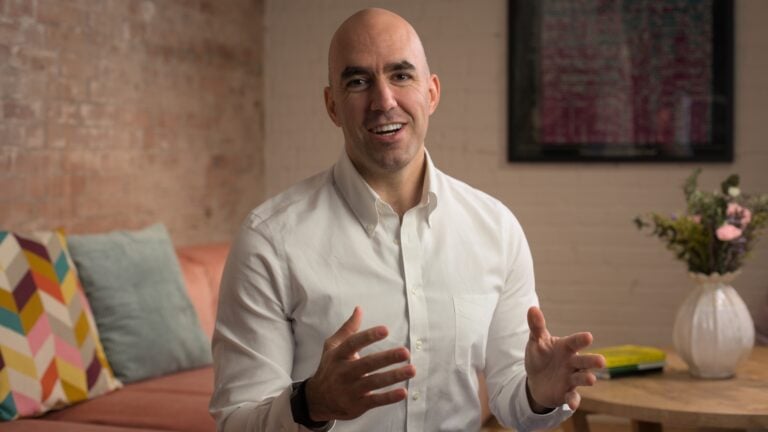Season 5: Innovating for impact
Customer zero. Using your team to innovate

One of the most powerful innovation tools you have is your team and those working around you.
As we saw in part 1 when we met “customer zero”, at Canva we like to use internal teams for product development to help foster a culture of innovation and collaboration. This approach not only streamlines the testing process but also provides invaluable insights, ensuring that the products we create and launch align with real-world needs. The impact extends beyond the development stage as it cultivates a sense of ownership among employees and helps to create a workplace culture where everyone has a hand in the success of the company.
In this part of the masterclass, we’ll delve deeper into the concept of “customer zero” and its transformative impact on fostering a culture of innovation within an organisation, examining how this practice of internal testing, feedback and trust contributes to continuous improvement.
Internal innovators are your best source of truth
At Canva, our global reach spans 190 countries and our product is accessible in 100 different languages, reflecting our status as a truly international company with 4,000 employees worldwide. Within this diverse and dynamic environment, we introduced a key innovation tool known as “customer zero”. The idea is to use our internal teams as the primary testers and feedback providers for our products, a strategy that has been instrumental in nurturing a culture of innovative thinking at Canva.
Harnessing the expertise of our own team members as the initial consumers of our products offers invaluable insights and real-world perspectives. This internal feedback loop serves as a crucible for ideas, enabling us to iterate swiftly, address potential challenges and refine our products to their optimal state.
Even if it’s you and one other person, internal feedback is paramount
As a practical application of this approach, consider your own team, regardless of its size. Even in a micro or small business, where a team may comprise a few people, sharing your next project and seeking feedback still presents an opportunity for innovation that shouldn’t be overlooked. By treating your colleagues as your first “customers”, you move beyond mere testing; you embark on a journey of co-creation.
And of course, you may work in a company where your team wouldn’t actually use the product or service that you make – it may be a product for hospital environments, for example – but you can still ask for honest feedback and you may find these insights incredibly useful for a future iterations. By tapping into the collective insights and perspectives of the people you work with, you’re able to gain valuable insights that will inevitably help your output to customers.
Research and development – for everyone
Engaging with your teams and gaining their insights is not just about testing; it’s an invitation to create a collaborative environment where each team member becomes an integral part of shaping and perfecting your business.
TRY THIS:
I’d like you to set up your first collaborative session with your teams. To start, think of a project – it can be small scale to begin with – and bring in the relevant team, or individual, and start to share comments and ideas. This can be done virtually, but I’d recommend coming together in person if you can.
Explain to the group that there’s no right or wrong and encourage open communication – this will create a comfortable space for sharing ideas without judgement. As the person facilitating the session, actively listen to the thoughts and ideas that are shared and build upon them collaboratively. You may like to use a real or virtual whiteboard at this point for collaborative idea-sharing; Canva’s virtual Whiteboard can convert bullet points into a presentation with one click of a button – saving you time after the session when it comes to sharing the findings.
This level of engagement is a powerful catalyst for innovation within your business. Embracing collective thinking not only generates creative solutions but also strengthens the team’s collaborative spirit and problem-solving capabilities, and ultimately helps give you the opportunity to truly test your product or service before your actual customers have that chance.


